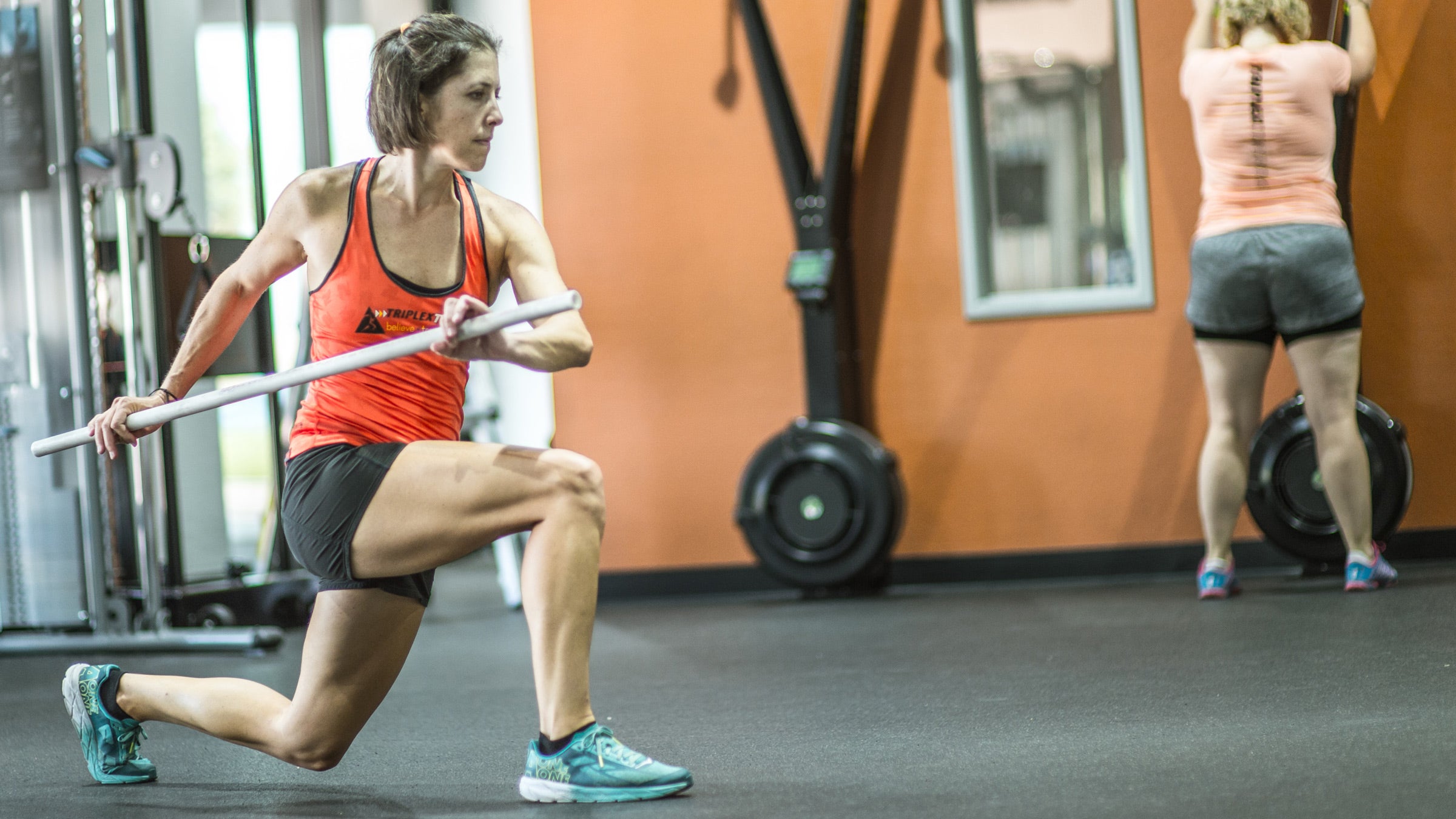Ask a Trainer: How Do I Build a Balanced Body?

Building a balanced body doesn't have to be complicated. (Photo: Brad Rogers / Triplex Training)
We all want to show up on race day at 100% ready to put all of our hard work to the test and celebrate with the results of a PR, podium finish, or just knowing we did our best on that day. All too often, there may be something along the way that results in an injury, slight ache, or pain that doesn’t allow us to put on our best performance or even show up on the starting line. So, how do we build a balanced body to minimize injury risk?
1. Focus on function
Your workout routines outside of swim, bike, and run should have a purpose, and they should be centered around function. It’s often easy with three other sports to skip the strength-training sessions.
Too often, triathletes hear “strength training” and envision racks of heavy weights, and get intimidated or feel like it’s not worth the added training time. A true full-body functional workout allows you to use minimal to no equipment while also maximizing your time to squeeze in a workout.
Rather than training single muscles in single planes of movement, a functional workout will work the entire body in a much more efficient manner.
2. Don’t neglect your core
An athlete with a strong upper and lower body but a weak core will never reach their true potential. The core is the crossroads of the body and is vital to nearly all movements across all three sports. Take the run, where it’s easy to visualize the dynamics: as the right foot steps forward, we naturally swing our left arm forward and vice versa. This repeated movement occurs thousands of times, and a strong core will greatly improve efficiency.
When you’re visualizing your core, be sure to think beyond the “six-pack.” Your core also includes muscles from mid-chest to mid-thigh, as well as the obliques, rectus abdominis, gluteals, hip flexors, and more.
3. Find your weaknesses
It is often an imbalance within the kinetic chain that leads to chronic injury. So how do you find and target these potential weaknesses to build a balanced body? An evaluation from a trained professional is ideal, but there are some simple strategies you can do on your own.
With a proper functional training plan that includes single-limb exercises, you can do a self-evaluation. For example, a single-leg squat can be used as part of a workout and also serve as a test. Take note of fatigue factor, balance, and mobility.
When you find an imbalance, adjust the sets/reps to improve the weaker side. There are many unilateral exercises that can also be used as a test to determine your own imbalances; the key is to then work toward symmetry.
4. Listen to your body
The simplest strategy is one of the most important – you have to listen to your body. Whether or not you have a coach who writes your plan or you are just maintaining a plan on your own, be sure to listen to the cues your body gives you by taking a day off, stretching out sore muscles, getting enough sleep, and maintaining nutrition.
The human body can complete some amazing tasks, but when you feel a shoulder or knee that is giving you some aches and pains, tell your coach, back off your workout, or take a rest day. Often, taking one day off now can eliminate 10 days off later in training.